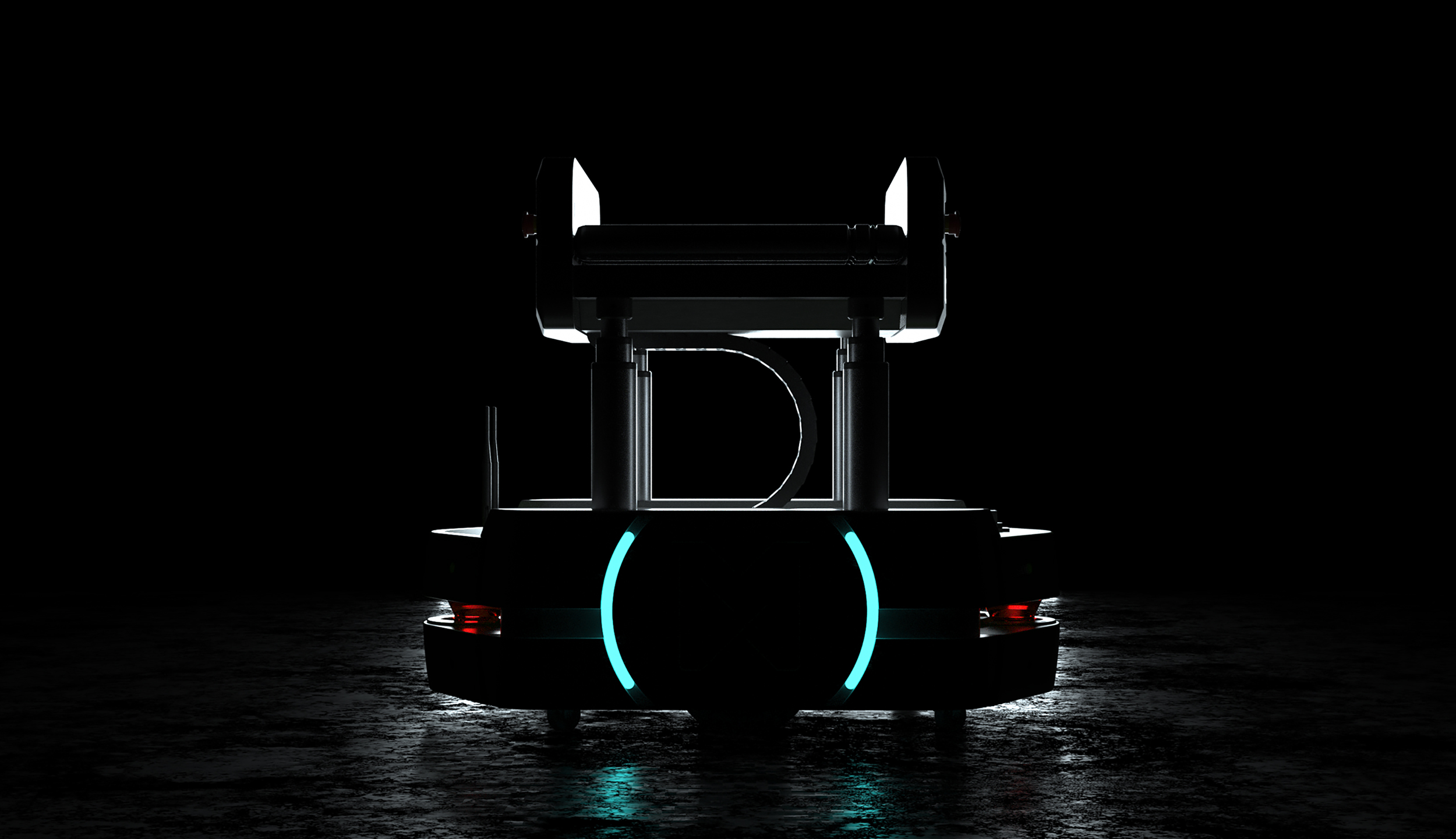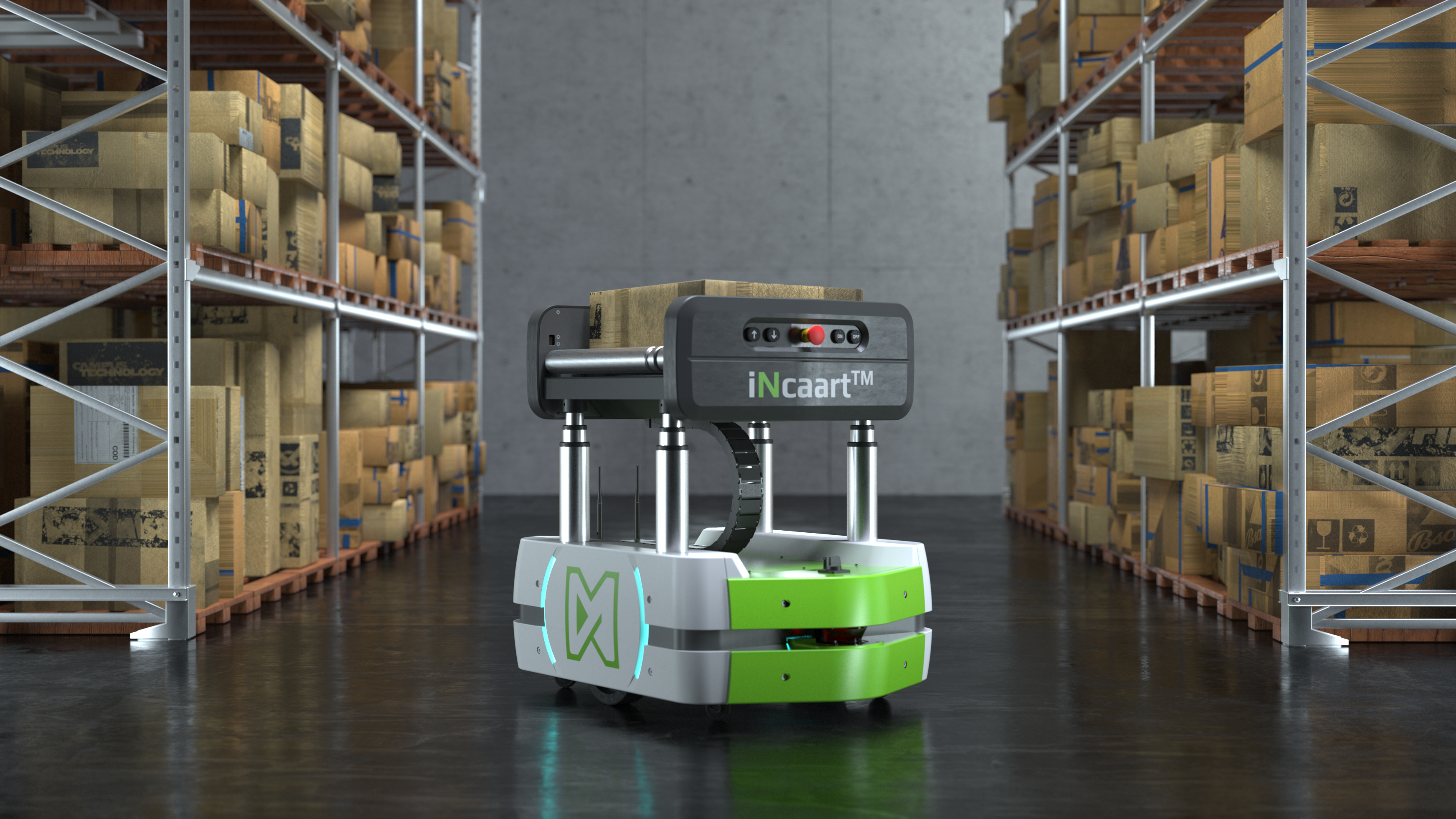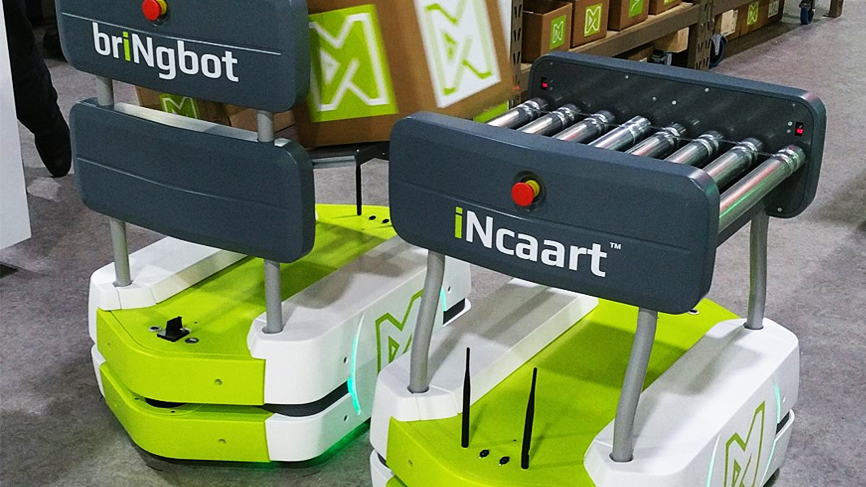How eye-catching design takes the lead over your competitors.

We’ve talked before about the importance of successful design being based on form following function. The style and appeal of a product have a great deal to do with its saleability. In some projects we’ve collaborated on, the aesthetic design can be a key part of the brief.
Table of Contents
In 2018 we were approached by Guidance Automation with the challenge of designing a functional outer casing for their existing AMR (Autonomous Mobile Robots).
The AMR is used in a huge – and growing – marketplace as a picking assistant: e-commerce, automotive production lines, electronics manufacturing plants, pharmaceutical manufacturing to name a few. Using an AMR to for mundane and repetitive roles, such as transporting parts from one location to another, means that human input can be used in areas where they add value.

Function played an important role in this project, of course. The aim was to design a base that housed the existing motorised drive train and electronic navigation system of the AMR.
As part of the technical specifications we ensured that the components were easily accessible for maintenance, servicing and repair. It also incorporated a universal interface to support a lifting mechanism and variety of modular tops – of which we designed two, a conveyor-top and a pick-assist version. With these complete, the entire AMR was market ready – in function at least.

Key Aspects of the form
The form of a product is led naturally by successful function. In this case a key requirement of the client was that it would also be aesthetically pleasing.
There are a number of reasons for aesthetic design, an obvious one being improved marketability. Humans are naturally drawn to products we like to look at – a bias towards things that are attractive. In a highly competitive marketplace, an AMR that is eye-catching is more likely to make a memorable first impression.
Another aspect industrial design agencies must consider is the ‘halo effect’. This is a psychological concept that states that the when a product looks good, we automatically assume it has more value and better qualities than another. Apple are a great example of using this technique to help sell their products. Also, it shows mechanical engineering has great impact on product qualities.
When dealing with robotics, the aesthetics can carry even greater importance. There are a number of factors to consider –
- It should take into account usability – making the technology simple and functional.
- An aesthetic design that increases the perceived value of the robot encourages users to take more care of it – prolonging its lifespan.
And, it cannot be ignored that where a robot may be seen as a human replacement, a pleasing design will encourage the user to see it as a tool rather than a complication.
In short – aesthetic design encourages a more positive emotional response.
The final consideration of the visual design was the environments where the AMR would function. The leading marketplaces include manufacturing and factory settings, where large machinery and technology are not out of place. In these locations the AMR would need to be both sturdy and rugged.
However, another aspect of the project specification is that automated robots have a place in public facing locations such as hospitals – moving laundry for example. In this environment where public and staff unfamiliar with AMR may come into contact with it, the product needed to be non-threatening while still carrying the warning lights and symbols required by Health and Safety.
The team at Bluefrog Design consultancy company took the company branding as a base line – giving us a tough, strong looking frame in friendly green and white brand colours.
The end result – a visually pleasing, eye-catching design whereas innovative design that speaks to strength, versatility and reliability. The AMR is appealing to customers, has the added-value appeal that encourages staff to take more care of it, and all the function required for the multitude of marketplaces. A beautiful merge of function and form.
How can Design Ideas make you beat your competitors?
Innovative design ideas can give a competitive edge by differentiating products in the market. They can address unmet user needs or improve existing solutions, enhancing usability and appeal. Good design often leads to a better user experience, fostering brand loyalty and positive word-of-mouth. It can also streamline production processes, reduce costs, and increase efficiency. By focusing on both aesthetics and functionality, effective design can capture attention, satisfy customers, and position a product or brand as a leader in its field. This strategic use of design is key to standing out in a crowded marketplace.
What is the importance of eye-catching design ideas?
Eye-catching design ideas are crucial as they grab attention and make a memorable first impression. In a saturated market, they help products or brands stand out, capturing the interest of potential customers. An appealing design can evoke emotional responses, influencing perceptions and decision-making. It also aids in communicating the product’s purpose and values effectively, enhancing brand recognition and recall. In essence, eye-catching designs not only attract but also retain customer interest, playing a key role in marketing and brand identity strategies, ultimately driving consumer engagement and business success.
If you would like to see more on our services
If you would like to hear more on how we can improve the quality of your products or help with your product development, please contact Bluefrog Design at mail@bluefrogdesign.co.uk
FAQ’s on eye catching design
How can eye-catching design enhance my brand's competitiveness?
An eye-catching design enhances your brand’s competitiveness by immediately drawing attention and differentiating your products in a crowded market. It creates a strong first impression, fostering brand recognition and recall. Visually appealing designs resonate emotionally with consumers, influencing their purchasing decisions and building brand loyalty. By effectively communicating your brand’s values and identity through design, you create a distinctive and memorable brand image, which is essential in attracting and retaining customers in a competitive business environment.
What elements contribute to an eye-catching design that outshines competitors?
Elements contributing to an eye-catching design that outshines competitors include a unique colour scheme, innovative layout, and distinctive typography. Incorporating compelling imagery or graphics, balanced composition, and a clear, strong message also play a crucial role. Design that tells a story or evokes emotion resonates more with the audience. User-friendly and intuitive interfaces in digital design enhance user experience. Consistency in these elements across all branding materials further strengthens brand identity, making the design not only eye-catching but memorable in a competitive market.
Can eye-catching design influence consumer perception and purchasing decisions?
Yes, eye-catching design can significantly influence consumer perception and purchasing decisions. A visually appealing design captures attention, sets the tone for the brand, and can convey quality and reliability. It plays a key role in shaping the first impression of a product or brand. Good design also evokes emotional responses, which can positively influence consumer attitudes and preferences. This emotional connection can lead to increased brand loyalty and a higher likelihood of purchase, as consumers often choose products that not only meet their needs but also appeal to their aesthetic sensibilities.
How does user experience (UX) design contribute to outperforming competitors?
User Experience (UX) design contributes to outperforming competitors by enhancing customer satisfaction and loyalty. By focusing on creating a seamless, intuitive, and enjoyable interaction with a product or service, UX design ensures that users find value and ease in their experience. This positive engagement fosters brand loyalty and increases the likelihood of repeat business. Good UX design also addresses and anticipates user needs, setting a product apart in a competitive market. Businesses that invest in effective UX design are more likely to retain customers and attract new ones, gaining a significant edge over competitors.
Are there specific design trends that can give my business a competitive advantage?
Certain design trends can give your business a competitive advantage. These include minimalism, which focuses on simplicity and functionality; bold typography, which grabs attention and makes a statement; and responsive design, ensuring a seamless user experience across various devices. Embracing sustainable and eco-friendly designs can appeal to environmentally conscious consumers. Utilising data visualisation effectively can make complex information accessible and engaging. Adopting these trends thoughtfully, in a way that aligns with your brand identity and user needs, can enhance your brand’s appeal and differentiate your offerings in the marketplace.
Like to learn more?
Socials



